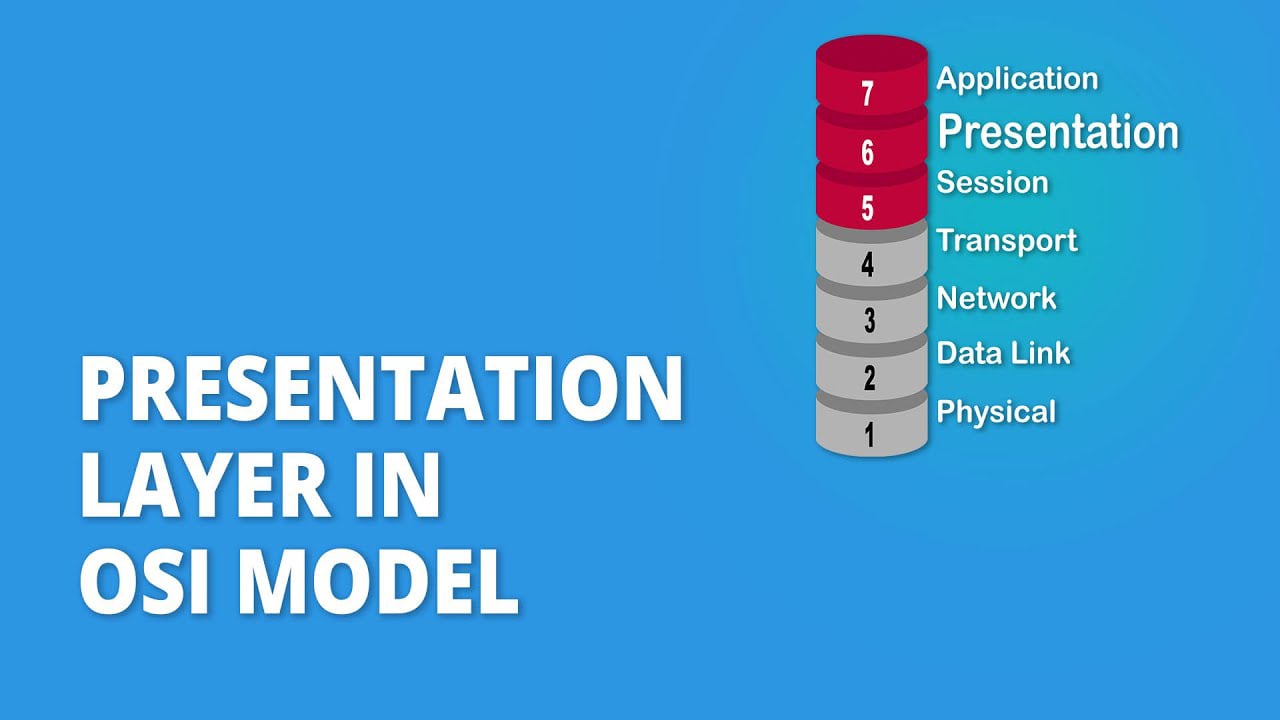What is the Presentation Layer in the OSI model?
Professionals in various industries handle and transmit large amounts of data every day. The way that this data transmission takes place relies on numerous computer processes, each of which can be understood as a layer in a system. One of these layers is the presentation layer, a level just below what users interact with when they input data on a computer. In this article, we define the presentation layer, discuss its primary functions, and explain who might benefit from understanding it.
What is the Presentation Layer?
The presentation layer resides at Layer 6 of the Open Systems Interconnection (OSI) communications model and ensures that communications that pass through it are in the appropriate form for the recipient application. In other words, it presents the data in a readable format from an application layer perspective.
For example, a presentation layer program could format a file transfer request in binary code to ensure a successful file transfer. Because binary is the most rudimentary of computing languages, it ensures that the receiving device can decipher and translate it into a format the application layer understands and expects.

What does it do?
The presentation layer interacts closely with the application layer, which is located directly above it. The presentation layer’s main task is to present data in such a way that it can be understood and interpreted by both the system sending the data and the system receiving it. After this has been accomplished, the application layer then determines how the data should be structured and what sort of data and values are permissible.
Using these entries, a command set, or an abstract transfer syntax, is then automatically created. The presentation layer now has the task of transferring the data in such a way that it is readable without changing the information contained within it.
It is often also responsible for the encryption and decryption of data. The information is first encrypted on the sender’s side and then sent to the receiver in an encrypted state. Keys and encryption methods are then exchanged in the presentation layer. The recipient is then able to decrypt the unreadable data and convert it into a format that can be understood and interpreted.
Some functions
The presentation layer is the residing layer of a computer’s operating system. It communicates with the application layer, from which it receives data inputted by the user. This layer performs three important functions in the transmission of data between computers. These are:
- Translation – The data that the presentation layer receives from the application layer is a series of characters and numbers. Because encoding schemes between different computers are dissimilar, the data must be converted to bit streams to be readable by the receiving computer. On the sender’s end, the presentation layer translates the data from a user-dependent format to the common binary format. Then, when the data comes through on the receiver’s end, their presentation layer translates it to another, receiver-dependent format. This act of translation ensures that the data is presented properly on the recipient’s end.
- Encryption and decryption – Encryption is the process of scrambling data so that it’s unreadable to unauthorized parties, and decryption is the process of converting the scrambled data back to a readable form. Because computer systems often handle sensitive information, the presentation layer performs both of these important security tasks. On the sender’s end, the layer encrypts the transmitting data before it enters the session layer. On the receiver’s side, the presentation layer decrypts the data so it can display properly on the application layer.
- Compression – Compression is the process of reducing data size. This process is helpful for transmitting data because smaller files transmit more quickly. The presentation layer performs compression on the sender’s side to reduce the bandwidth of the transmitting data and accelerate its rate of transmission. If you’re sending large data, such as multimedia files, this process performed by the presentation layer helps ensure that it reaches its destination in optimal time with no appreciable loss in quality.
Presentation layer protocols
Other protocols sometimes considered at this level (though perhaps not strictly adhering to the OSI model) include:
- Apple Filing Protocol (AFP)
- Independent Computing Architecture (ICA), the Citrix system core protocol
- Lightweight Presentation Protocol (LPP)
- NetWare Core Protocol (NCP)
- Network Data Representation (NDR)
- Telnet (a remote terminal access protocol)
- Tox, The Tox protocol is sometimes regarded as part of both the presentation and application layer
- eXternal Data Representation (XDR)
- 25 Packet Assembler/Disassembler Protocol (PAD)

Who needs to understand the presentation layer?
Understanding the OSI model is essential for IT industry professionals. The model acts as a reference guide in developing communication products and software applications.
Understanding the presentation layer benefits network administrators who must troubleshoot network issues and software vendors who program software. It helps vendors create interoperable products.
Furthermore, understanding the sixth layer benefits cybersecurity professionals, as the presentation layer takes care of data encryption. Some common threats at this level include encoding attacks, encryption attacks, and decryption downgrade attacks. Therefore, professionals use the presentation layer to secure data transmitted over a network.